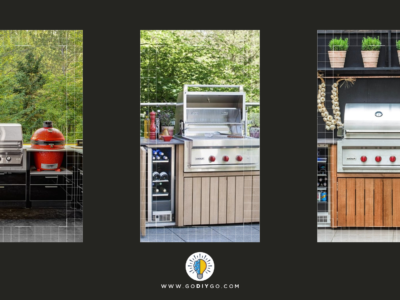Do you have an interest in working with wood, but you’re not sure where to start?
Woodworking is a hobby that offers many benefits, from rewarding projects to excellent practical skills. It can also give you a feeling of accomplishment and a good sense of pride.
Like with any hobby, there are things you need to learn before you can get started. Fortunately, there’s a lot less to it than it seems.
If you are planning to learn woodworking, keep reading our guide on woodworking for beginners.
Woodworking for Beginners: The Basics
Woodworking is a fun and rewarding hobby that people of all ages and skill levels can enjoy. Whether you’re looking to build a simple piece of furniture or a more complex project, there are a few things you need to know before getting started.
This quick guide will cover the basics of woodworking for beginners, including the different types of wood and the essential tools you’ll need. With these basics in mind, you’ll be on your way to creating beautiful and unique pieces you can be proud of.
Tools You’ll Need
To start your woodworking journey, you need to get your tools together. First, you’ll need a saw. You can choose from a hand saw, power saw, and jigsaw.
Next, you’ll need a way to measure and mark your wood. A tape measure and a square are essential, and a level can be handy.
You will also need some sander, clamps, a drill, a drill bit, a screwdriver, and a dovetail marker. If you don’t have all of these woodworking tools, don’t worry. You can usually borrow them from a friend or find them at a hardware store.
Choosing the Right Wood for Your Projects
In woodworking, the two most important factors to consider when choosing wood for a project are the strength and density of the wood. Hardwoods are better for projects that require more durability, such as furniture. Softer woods are better for projects that require more density, such as cabinets.
When choosing the wood for your project, make a woodworking plan and consider the following: What is the project? What is the desired look of the project?
Aside from these, also ask yourself: What is the budget for the project? What is the difficulty level of the project? What is the timeline for the woodworking projects?
By answering these questions, you can narrow down your choices. You will be able to choose the best wood for your project.
The Different Types of Woodworking
There are various types of woodworking, each with its unique group of tools and techniques. The most popular include carpentry, joinery, and woodturning.
Carpentry focuses on the construction of buildings and furniture. It involves cutting, shaping, and assembling wood into the desired form like framing, cabinets, and furniture.
Joinery is a type of carpentry that focuses on creating joints between pieces of wood. The most common joints are dovetails, mortise and tenon, and miters.
Woodturning is the process of shaping wood using a lathe. It is a versatile technique that creates assorted objects, from bowls and vases to furniture and jewelry.
Essential Woodworking Techniques
There are a few essential woodworking techniques that every beginner should know. These techniques include sawing, planing, joining, and finishing. Each of these techniques is important in its own right. You’ll create beautiful and long-lasting projects if you learn how to use them correctly.
Sawing
Sawing is a relatively simple process that you can do with just a few tools. When choosing a saw, be sure to select one that is appropriate for the type of material you’ll be cutting.
For example, a handsaw is best for cutting softwoods, while a power saw is better for cutting hardwoods. Use the correct blade for the type of material you want to chop.
When sawing, be sure to use a steady, even motion. Pressing too hard can cause the saw to bind. While not doing it hard enough will make the cut less precise.
Planing
Planing is one of the first things you’ll need to learn in woodworking. It involves running a plane along the surface of the wood, taking care to keep the plane’s blade perpendicular to the surface.
Remember that you’ll need to adjust the depth of the plane’s blade according to the type of wood you are using. Softer woods require a shallower blade setting, while harder woods need a deeper one.
Joining
Joining is an essential technique for beginners in woodworking. There are many ways to join pieces of wood together, but some of the most common and popular methods are using dowels, using screws, using bolts, and using nails.
Screws are great for joining pieces of wood together quickly and easily, but they’re not as strong as other methods like dowelling. Nails are also quick and easy, but they’re not as strong as screws and can be difficult to remove if you need to disassemble the project.
Finishing
Finishing is the process of adding a protective coating to wood. It can help protect the wood from damage and give it a nice, finished look.
There are several different ways to finish wood. Experiment and try varied techniques and see what works best for you. With practice, you’ll be surprised at what you can create!
Benefits of Woodworking
In general, woodworking is a rewarding experience. It allows you to take control of your materials and design something unique while perfecting a set of skills you can use in several practical ways. Not to mention, woodworking can also be a great way to relax, de-stress, and bond with your family.
Many benefits come along with woodworking, both in the short-term and long-term. In the short-term, woodworking can boost your confidence and give you a sense of accomplishment.
In the long term, woodworking can become a hobby that provides you with a lifelong source of enjoyment. Either way, woodworking is a great way to add value to your life.
Create Wonderful Wood Pieces!
Woodworking is an excellent hobby for everyone. As a beginner, start small and learn the basics before moving on to challenging projects. This guide has hopefully given you a good starting point in your woodworking journey.
Read this a few times before beginning your project, and always wear safety goggles when working with tools. Remember to be patient, take your time and enjoy the process! With practice, you’ll be able to create wonderful wood pieces that you can be proud of.
If you enjoyed this article on woodworking for beginners, check out the rest of our blog. We have informative articles on many DIYs and home improvements.
















